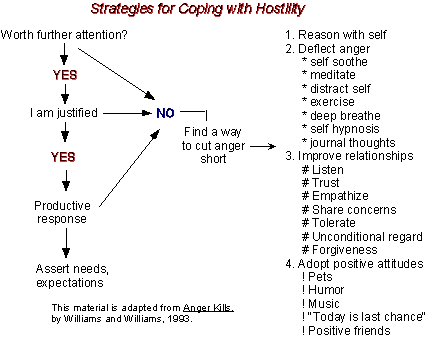
Balance of Power

Control shifts back and forth constantly in the classroom and in relationships. As Glasser (1984) discusses in his book, Control Theory, sometimes the struggle for control occurs because of a perceived or real need. He lists human needs as:
survival [food, air, water, shelter]
belonging [security, comfort, legitimate membership in a group or community]
power [sense of importance, stature, mattering to others]
fun [having a good time, emotional stimulation]
freedom [self direction, right to choose, responsibility].
Some of the most frustrating occurrences in the school day are a result of the student or teacher feeling powerless or out of control.
Examples |
|
| Teacher | Student |
| Yelling or shouting Punishing Bawling student out |
Not listening Talking during instruction Making faces or mimicking |
Many defense mechanisms protect the need to feel in control.
When upset, anxious or angry, we tend to become defensive. The following chart provides examples of common defenses.
|
Defenses
|
|||
| rationalizing judging explaining being smug withdrawing laughing pouting sarcasm |
projecting moralizing quibbling minimizing silence grinning threatening flattering |
blaming analyzing interrogating evading shouting staring joking manipulating |
accusing intellectualizing denyin gattacking or defying intimidating glaring complying surliness |
This list is amusing since these behaviors are present in nearly every interaction.
You may want to print out this list and monitor the next gathering of adults
to see how frequently these defenses occur. Your findings may suggest that feeling
in control is an important and pervasive feeling.
It can be enlightening to ask someone to monitor an hour of interactions in
the classroom, observing the number of times defenses are used, the defenses
of specific students and which students elicit defensive maneuvers in the teacher.
Gain Control of Control Issues
Emotions trigger defenses. When we feel anxious, we engage in controlling behaviors.
Anger also triggers these feelings and thus, the behaviors or reactions. This
is called the "fight-flight" (http://jan.ucc.nau.edu/~jde7/ese502/structure/strategies.html)
response.
Click on the rage button to find out your hostility quotient. http://jan.ucc.nau.edu/~jde7/ese502/structure/rage.html
This next illustration provides a guide to gaining control of our fight and
flight reactions.

Glasser, W. (1984) Control theory: a new explanation on how we control our lives.
New York: Harper & Row.